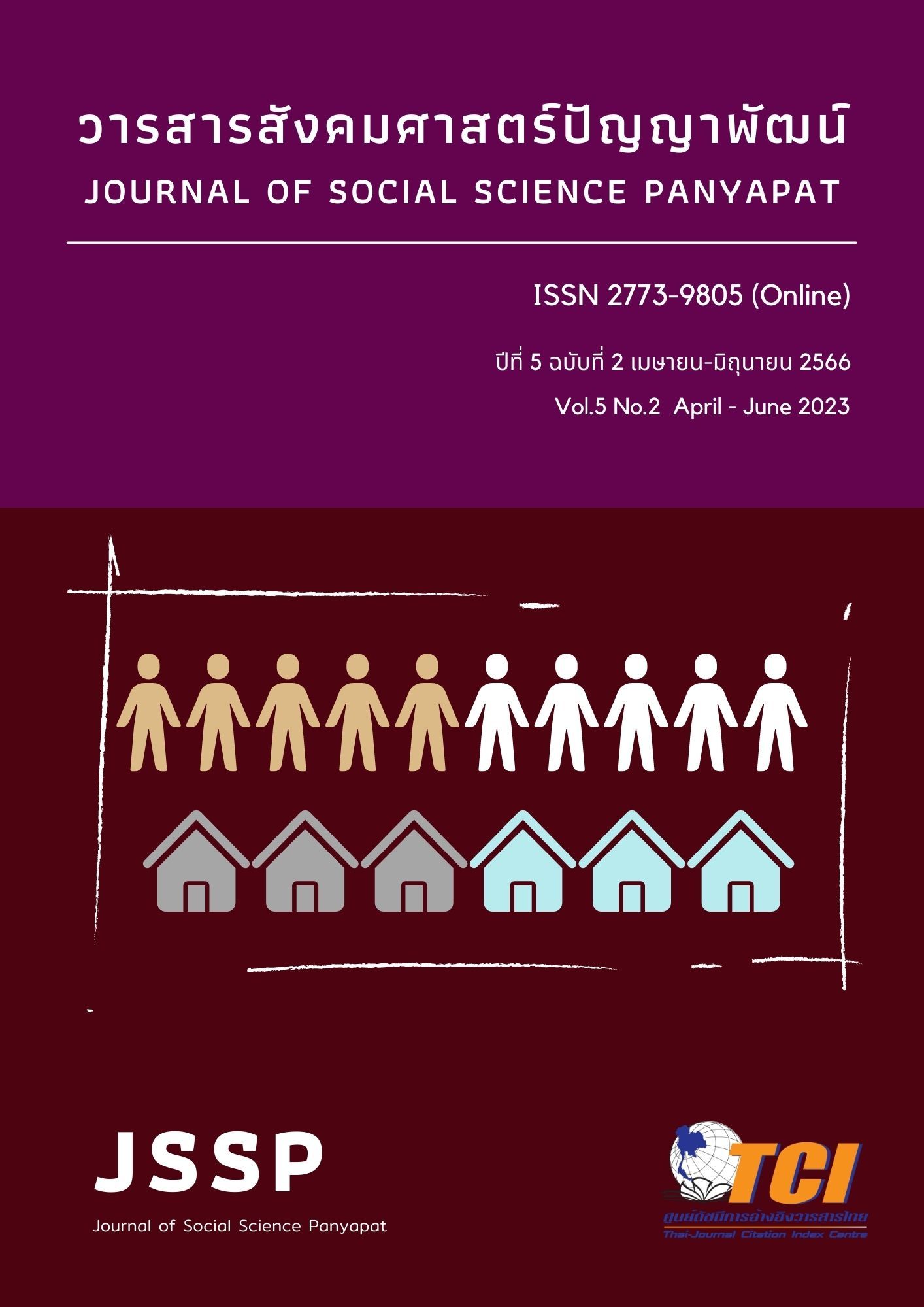The Factor of The Revenue Department’s Service System for Preparation and Delivery Electronic Tax Invoice and Electronic Receipts
Keywords:
Success Factor, E-Tax Invoice, Structural Equation ModelAbstract
This research article aimed to study factors affecting the success of the revenue department’s service system for preparation and delivery electronic tax invoice and electronic receipts (e-tax invoice & e-receipt). The analysis was conducted using a structural equation model (SEM) on quantitative data gathered from a sample group consisting of 313 users of the e-tax invoice & e-receipt system. The result of the study found that system quality, perceived usefulness, and perceived ease of use is a factors directly influencing the success of the e-tax invoice & e-receipt system, while information quality had no direct influence. But it has an indirect influence through perceived usefulness and perceived ease of use.
References
กรมพัฒนาธุรกิจการค้า. (2564). ข้อมูลการจดทะเบียนนิติบุคคล 2564. สืบค้น 31 มกราคม 2565. จาก https://www.dbd.go.th/download/document_file/Statisic/2564/H26/H26_2021.pdf.
กรมสรรพากร. (2564). รายงานประจำปี 2563. สืบค้น 28 มกราคม 2565. จาก https://www.rd.go.th/fileadmin/download/annual_report/annual_report63.pdf.
กองบริหารการเสียภาษีอิเล็กทรอนิกส์, กรมสรรพากร. (2562). ภาพรวมการจัดทำและนำส่งข้อมูลใบกำกับภาษีอิเล็กทรอนิกส์และใบรับอิเล็กทรอนิกส์. สืบค้น 1 สิงหาคม 2564. จาก https://etax.rd.go.th/etax_staticpage/app/#/index/support/manual#top.
ภานุกร เตชะชุณหกิจ และ ศุภชาต เอี่ยมรัตนกูล. (2562). อิทธิพลการยอมรับเทคโนโลยีและคุณภาพบริการอิเล็กทรอนิกส์ที่ส่งผลต่อการใช้งานระบบการจัดซื้อจัดจ้างภาครัฐด้วยวิธีการทางอิเล็กทรอนิกส์. วารสารสมาคมนักวิจัย, 24(3), 306-321.
วัชรา โสรส. (2558). การประเมินผลความพึงพอใจของประชาชนต่อบริการอิเล็กทรอนิกส์ภาครัฐ: กรณีศึกษา การใช้บริการยื่นแบบและชำระภาษีออนไลน์ของกรมสรรพากร. วารสารเศรษฐศาสตร์รามคำแหง, 1(1), 1-14.
สุธีกานต์ สุขโกมล. (2562). การยอมรับเทคโนโลยีที่มีผลต่อการใช้ระบบบริการจัดทำ และนำส่งข้อมูลใบกำกับภาษีอิเล็กทรอนิกส์และใบเสร็จรับเงินอิเล็กทรอนิกส์. (บัญชีมหาบัณฑิต, มหาวิทยาลัยธุรกิจบัณฑิต).
Bahari, A., Mus, A. R., & Mursalim, M. (2020). Perceived Ease, Benefits and Perceived Enjoyment of E-Invoice User Interests. Point of View Research Accounting and Auditing, 1(3), 33-42.
Bentler, P. M., & Chou, C. P. (1987). Practical issues in structural modeling. Sociological methods & research, 16(1), 78-117.
Punitha, A., & Chandra, P. (2017). Continuance intention of e-government service: a study of tax e-filing system in malaysia. (Doctoral dissertation, Universiti Utara Malaysia).
Puthur, J. K., Mahadevan, L., & George, A. P. (2016). Tax payer Satisfaction and Intention to Re-use Government site for E-filing. Indore Management Journal, 8(1), 46-59.
Ramdhony, D., Liébana‐Cabanillas, F., Gunesh‐Ramlugun, V. D., & Mowlabocus, F. (2022). Modelling the determinants of electronic tax filing services’ continuance usage intention. Retrieved 2 January 2023. from https://onlinelibrary.wiley.com/doi/pdf/10.1111/1467-8500.12559.
Sondakh, J. J. (2017). Behavioral intention to use e-tax service system: An application of technology acceptance model. European Research Studies Journal, 20(2A), 48-64.
Taro Yamane. (1973). Statistics: an introductory analysis. New York: Harper & Row.
Downloads
Published
How to Cite
Issue
Section
License
Copyright (c) 2023 Journal of Social Science Panyapat

This work is licensed under a Creative Commons Attribution-NonCommercial-NoDerivatives 4.0 International License.


